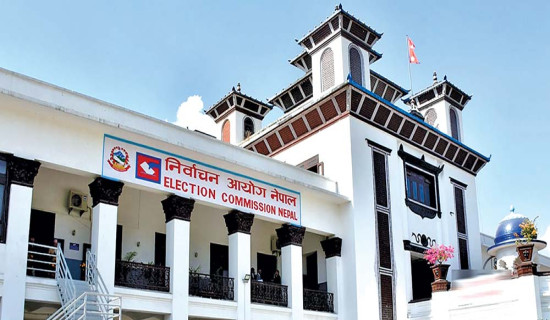- Sunday, 28 December 2025
Early Vote Trend
The results of the elections to the House of Representatives (HoR) and Provincial Assemblies are pouring in. The people are keenly watching the outcomes of the polls as they will determine the new political course of the country. The ruling Nepali Congress (NC) is now leading in the tally of the number of seats under the first-past-the-post (FPTP) election system while the opposition CPN-UML is ahead in the elections held for the proportional representation category (PR). Though clear picture of the positions of the parties and candidates will emerge towards the finalisation of the vote counts, preliminary signals are already visible.
NC seems to dominate the political scenario after this election as it is topping the chart of vote counts from the very beginning. As the counting proceeds further, the party is making further progress and no rival is coming near it. However, it is still not clear on the basis of the counting results so far, who will come out to take the positions of second and third force. There is also a major shift seen in the new political scenario with the fresh emergence of Rastriya Swatantra Party (RSP). Voters have also shifted their liking towards independent candidates.
Top leaders of major parties are leading the tally in the vote counting undergoing in their respective constituencies. Prime Minister and NC president Sher Bahadur Deuba has won from his Dadeldhura home constituency for the seventh consecutive time. UML chair KP Sharma Oli, CPN-Maoist Centre chair Pushpa Kamal Dahal Prachanda and Unified Socialist chair Madhav Kumar Nepal are leading in the vote count underway in Jhapa, Gorkha and Rautahat, respectively. On the other hand, Unified Socialist senior leader Jhalanath Khanal is trailing behind his rival from the UML while Janata Samajbadi Party chair Upendra Yadav is likely to lose to CK Raut of Janamat Party. Raut stands to challenge the old Madhes-based parties. In a similar manner, Nagarik Unmukti Party has won one seat in Kailali and is leading in three places.
NC has increased its seats in the Kathmandu Valley and outside with the backing of allies and on its own. What is more surprising is the emergence of the RSP led by television journalist Rabi Lamichhane. The party has won five seats in the Kathmandu Valley, a big upset for the major parties. Its candidates have rolled over their rivals from ruling alliance and opposition UML. It has also become third in the votes under the PR system. The rise of RSP marks a major vote shift seen in this election. In the Kathmandu Valley, the UML has won only two seats so far – one from Kathmandu and another from Lalitpur. It seems that new parliament to be formed after the election will be the combination of the young and old lawmakers.
Although it will take some days for the Election Commission to announce all results of the vote counts, one can trace trend of the polls from the victory, losses and leading of the candidates in the vote counting. It has become clear that no single party is going to secure majority in the parliament. The likely scenario is that the parties will have to go for alliances to lead the new government. This election is expected to bring the parties of divergent ideologies in the House and add impetus to the federal democratic republic installed through the promulgation of the new constitution. It is with the elections, the country gets fresh faces taking the helm of government and every new election offers its own nature of political combination and structure.

.jpg)















